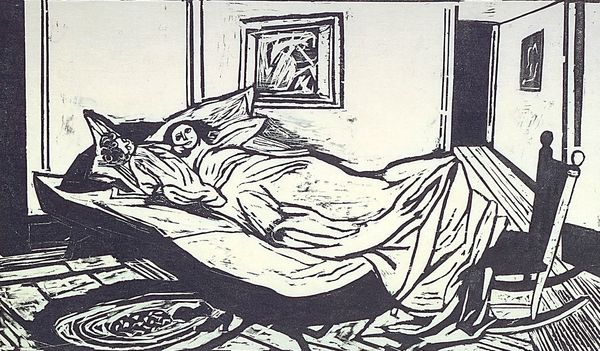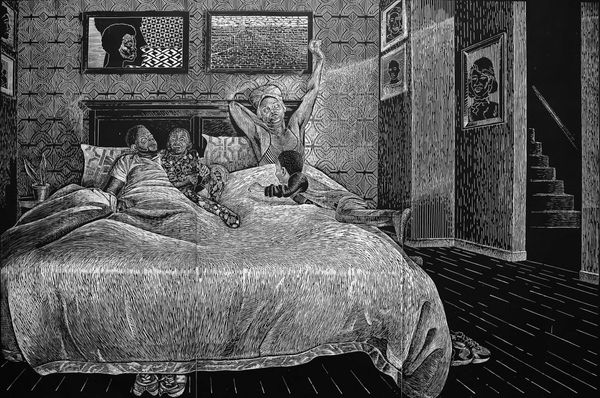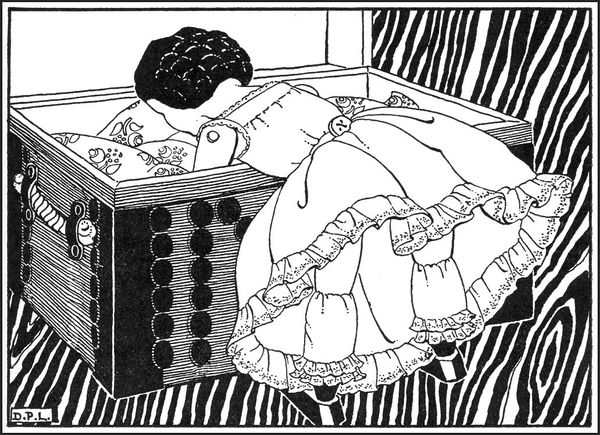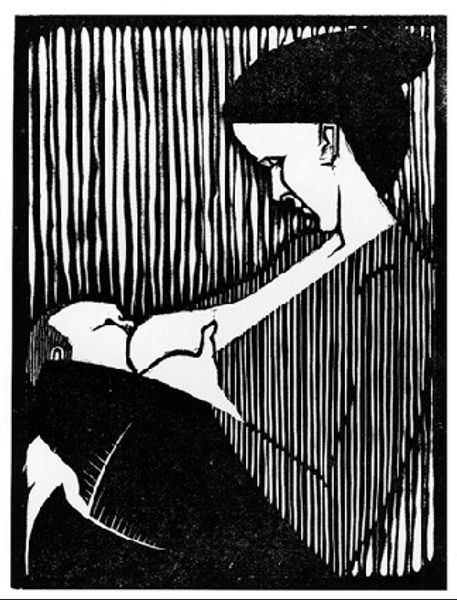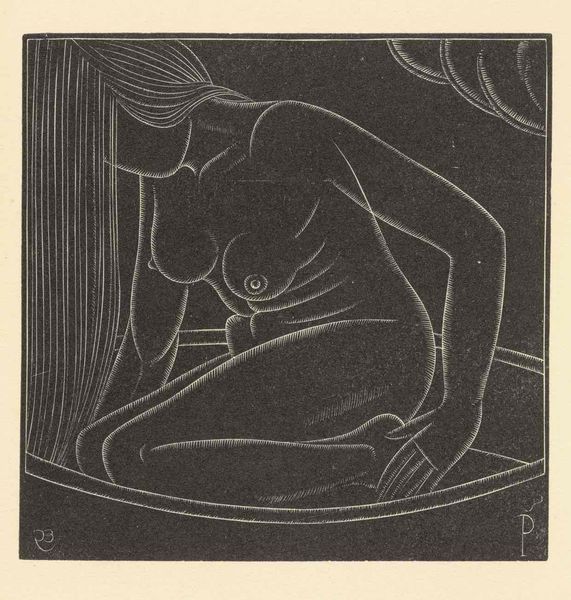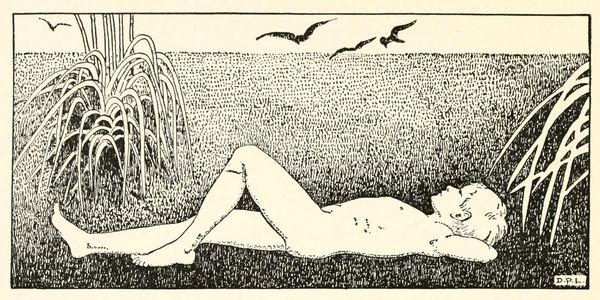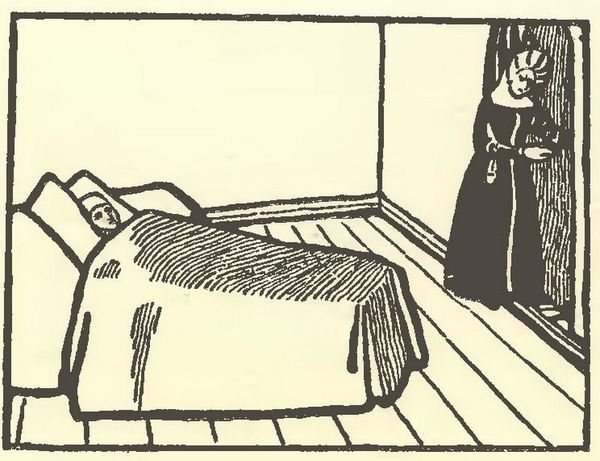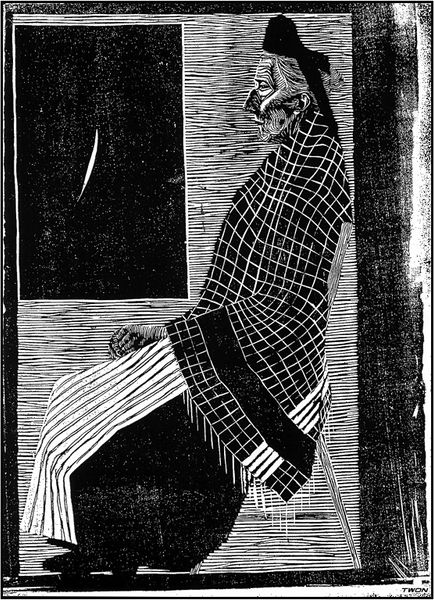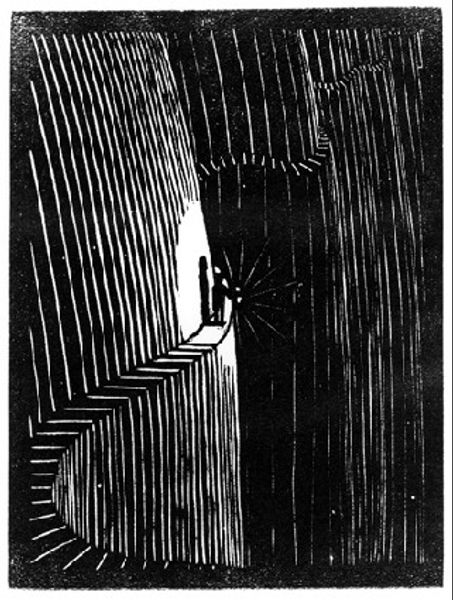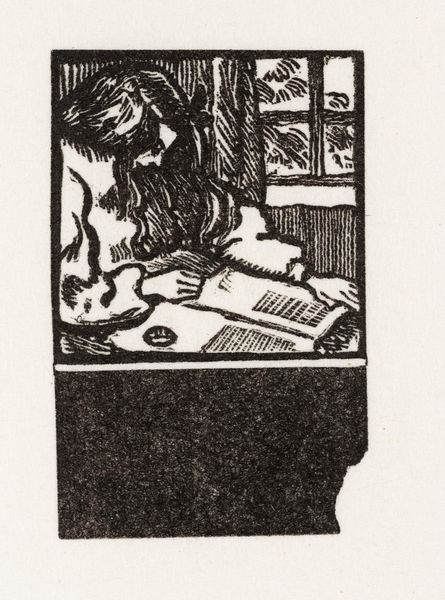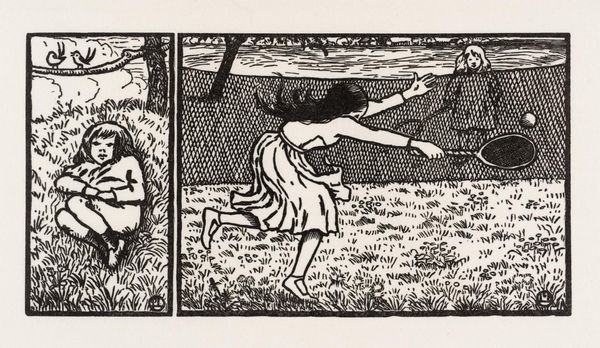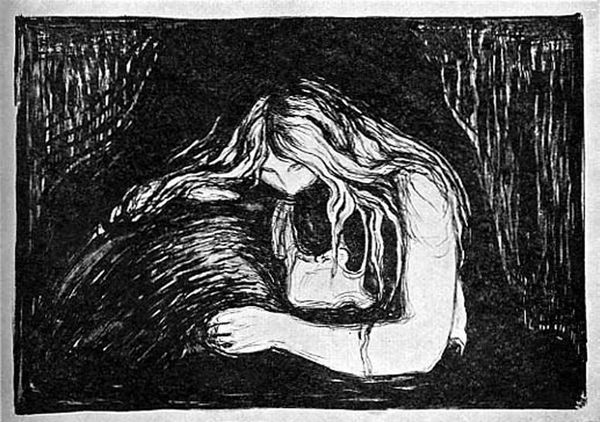
drawing
#
drawing
#
fairy-painting
#
narrative-art
#
line
#
modernism
Copyright: Dorothy Lathrop,Fair Use
Curator: This is Dorothy Lathrop's "The Treasure of Carcassonne," a drawing from 1928. I find the monochrome style very fitting. It's fascinating how the artist manages to evoke a feeling of dream-like magic with so few materials. Editor: Yes! It's a rather curious image. It’s a black and white line drawing of children sleeping in what appear to be bunk beds. What really strikes me is how the grain of the wood is emphasized in the drawing. I wonder, what do you see when you look at this piece? Curator: Precisely! The highly stylized rendering of the wood grain is where the labor becomes most visible. Consider how the process of creating this drawing necessitates a deep engagement with the materiality of both the wood being depicted and the drawing medium itself. Do you see how the artist uses line not only to describe form but to create texture and pattern? It is very modernist in that it celebrates art production. Editor: I see that now! So, instead of seeing it simply as a picture of children sleeping, you’re saying we should think about the process and skill involved in making the image? Like, focusing on Lathrop’s skill with a pencil in creating all those tiny wood grain lines? Curator: Exactly. The contrast between the soft figures and the intricate rendering of the wooden beds is critical. How does that material contrast reflect the social context of childhood—of bedtime rituals and manufactured security? Is there commentary here on childhood and class through depictions of these stark, yet cozy, bedrooms? Editor: I never thought of it that way. It’s so interesting to consider how even a simple drawing like this can reveal so much about the materials used and even how social ideas of "comfort" were manufactured! Curator: Indeed, paying attention to the materiality and labor involved in the artistic process opens new avenues for understanding the work.
Comments
No comments
Be the first to comment and join the conversation on the ultimate creative platform.
